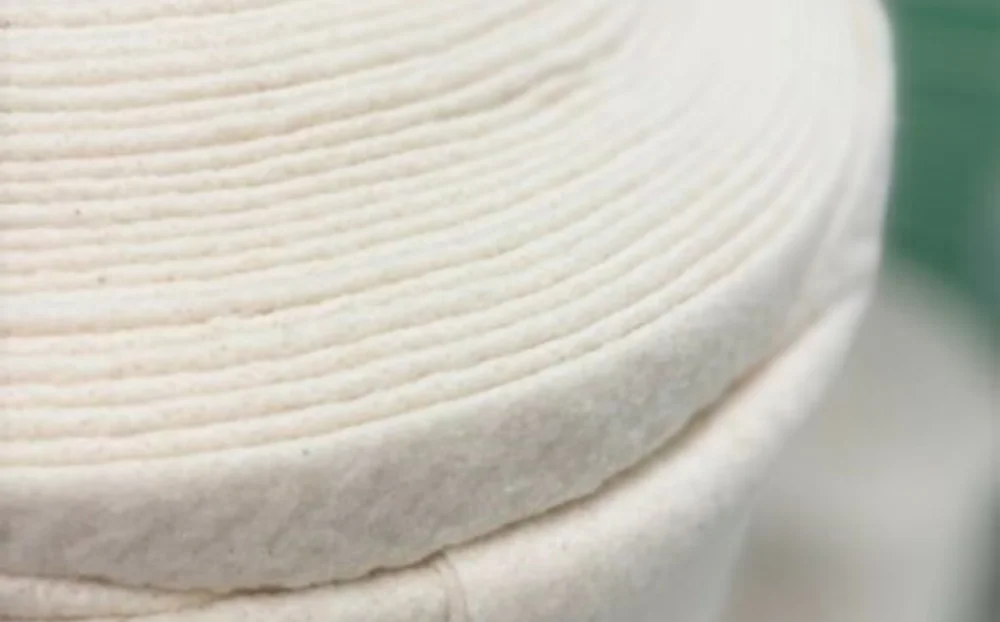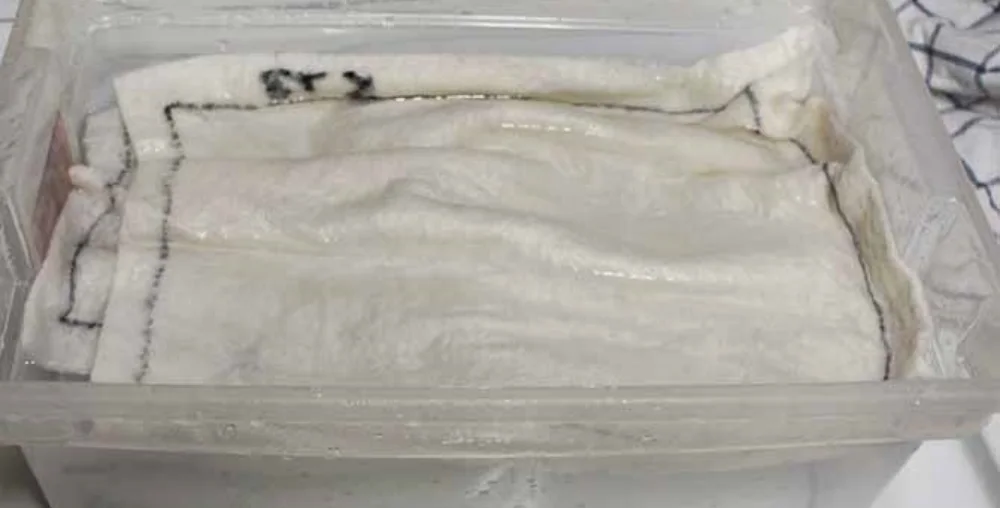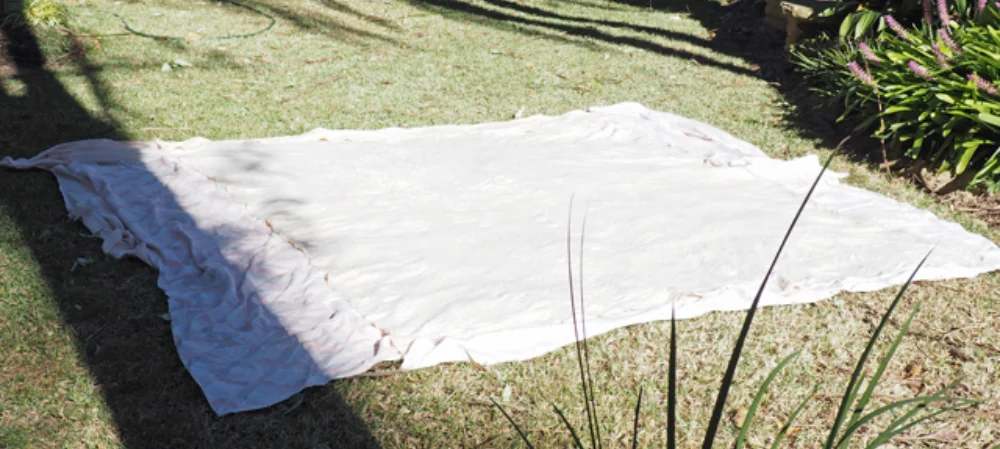You might wonder if you need to prewash cotton quilt batting before starting a project. Most quilters skip this step, especially when using high-quality batting for quilts like the ones from Fanda Fabrics. Some love the soft, crinkled look that comes from using unwashed 100% cotton batting.
You may choose to prewash to avoid shrinkage, remove chemicals, or meet specific project needs. If you’re sensitive to dyes or want to control the quilt’s final size, learning how to prewash cotton batting makes sense. Whether you’re new or experienced, your choice depends on your quilt’s style and your preferences.
Key Takeaways
Prewashing cotton batting helps prevent shrinkage and keeps your quilt true to size.
Washing removes chemicals and softens the batting, making it easier to work with and safer for sensitive skin.
You can skip prewashing if you want a crinkled, vintage look or if your quilt won’t be washed often.
Handle wet batting gently by supporting it fully and drying it flat to keep its softness and shape.
Follow care instructions and use a gentle detergent with cool water to protect your batting during prewashing.
Prewash or Not?
When to Wash Batting Before Quilting?

You might ask yourself if you should wash batting before quilting. The answer depends on your project and your personal preferences. If you want your quilt to stay the same size after finishing, prewashing makes sense.
Cotton quilt batting, especially 100% cotton batting, tends to shrink when you wash it. This shrinkage can change the look and feel of your quilt. Some quilters love the crinkled texture that comes from not prewashing, while others prefer a smooth, flat finish.
If you or someone using the quilt has sensitive skin, you may want to wash the batting before quilting to remove any chemicals or dust from manufacturing. Prewashing also helps if you want to avoid bearding, which is when fibers poke through the quilt top.
You can skip prewashing if you like a vintage look or if your quilt will not be washed often.
Tip: Always check the care instructions for your batting. Some types of cotton quilt batting, like blends or specialty battings, may not need prewashing or could be damaged by it.
Factors for Fanda Fabrics Batting
Fanda Fabrics offers a wide range of cotton quilt batting, including options for bulk quilt batting and different types of cotton quilt batting. Their batting is lightweight and works well for all seasons.
You might notice that cotton quilt batting from Fanda Fabrics can shrink and bloat, which means prewashing helps prevent distortion and keeps your quilt flat during assembly.
You do not need to treat bulk quilt batting differently from standard-sized batting when deciding to prewash. The fiber type matters more than the size. For cotton and bamboo batting, prewashing helps avoid shrinkage and keeps the texture soft.
If you use polyester or bonded battings, you can skip prewashing because these types do not shrink much and may lose durability if washed.
If you want your quilt to look crisp and stay true to size, prewashing is a smart step. If you prefer a cozy, puckered finish, you can use the batting straight from the package. Fanda Fabrics’ batting gives you flexibility, so you can choose what works best for your style.
Pros & Cons
Shrinkage and Texture
When you decide whether to prewash cotton quilt batting, shrinkage and texture are two things you’ll notice right away. Washing cotton batting usually causes it to shrink about 3-5%. This is true for most brands, including Fanda Fabrics. If you skip prewashing, your finished quilt may shrink after its first wash, giving it a puckered, vintage look.
Some quilters love this effect because it adds character and hides small sewing mistakes. Others want a smooth, flat finish and choose to prewash to control the final size.
Here’s what you can expect:
Prewashing removes chemicals and softens the batting, making it easier to handle.
Shrinkage happens before you sew, so your quilt keeps its shape.
If you want a crinkly, antique look, use 100% cotton batting straight from the package.
Prewashing both the quilt top and batting helps prevent puckering.
Washing after quilting increases puckering and texture.
Note: Some traditional cotton battings may not hold up well to prewashing. Always check the label before you start.
Project Impact
Prewashing cotton quilt batting can change how your quilt turns out. If you want your quilt to stay true to size, prewashing is a smart move. It helps prevent unexpected shrinkage and keeps your quilt looking crisp.
Prewashing also removes any leftover chemicals from production, which is helpful if you have sensitive skin or want an eco-friendly project.
Prewashing helps you spot color bleeding early, especially with bright or dark fabrics.
It reduces warping, fraying, and distortion, so your quilt stays strong.
The batting feels softer and more flexible, making it easier to work with.
Art quilts or wall hangings, which you rarely wash, may not need prewashing.
Fanda Fabrics offers eco-friendly and durable options, so you can choose the best batting for your needs. Whether you want a classic, puckered quilt or a smooth, modern finish, you have the flexibility to create your perfect project.
How to Prewash Cotton Batting?

Learning how to prewash cotton batting can help you avoid surprises in your finished quilt. You want your quilt to look and feel just right, so let’s walk through each step together. Whether you’re using Fanda Fabrics’ cotton quilt batting, a bamboo blend, or bulk batting, these steps will help you get the best results.
Preparation Steps
Before you start, gather your supplies and set up your workspace. Here’s how to get ready:
Sort your cotton batting by color. If you have black, white, or natural batting from Fanda Fabrics, keep similar colors together. This prevents dye transfer.
Check the size and thickness of your batting. Fanda Fabrics offers everything from ultra-thin to thick, plush batting. Thicker pieces may need a bit more space and time to dry.
Use cold or lukewarm water. Hot water can cause extra shrinkage and damage the fibers.
Add a color catcher sheet if you’re worried about dye bleeding, especially with colored batting.
Choose a gentle, fragrance-free detergent. Avoid bleach and fabric softeners, which can break down the fibers.
Prepare a clean, flat surface for drying. You can use a drying rack, a clean towel, or even hang the batting if it’s not too heavy.
Tip: Always read the care label on your Fanda Fabrics batting. Some specialty blends, like bamboo-cotton, may have unique instructions.
Soaking and Washing
Now you’re ready to learn how to prewash cotton batting. This step is gentle but important for removing chemicals and letting the batting shrink before you sew.
Fill a bathtub or large basin with cool or lukewarm water. Make sure there’s enough room for the batting to move freely.
Add your gentle detergent and swirl the water to mix.
Submerge the batting completely. Let it soak for 15 to 30 minutes. This helps remove any manufacturing residue and allows the fibers to relax.
Gently agitate the water with your hands. Don’t twist or wring the batting—just press it down and move it around a bit.
Drain the water and refill with clean water to rinse. Repeat until the water runs clear and no soap remains.
If you’re working with a large piece of bulk quilt batting, you might want to pre-wash the batting in sections. This makes handling easier and helps you avoid stretching or tearing.
Note: Never wash your quilt top with the batting. Always prewash cotton batting separately to protect your fabrics and seams.
Drying and Handling

Drying is just as important as washing when you’re figuring out how to prewash cotton batting. You want to keep the loft and softness that make Fanda Fabrics batting special.
Lay the batting flat on a clean towel or drying rack. Smooth it out gently with your hands.
If you prefer, you can tumble dry on low heat. This works well for smaller pieces or thinner batting. Avoid high heat, which can shrink or distort the fibers.
For extra-large or thick batting, air drying is best. Hang it over a shower rod or lay it across several chairs to support the weight.
Once dry, press the batting with a warm iron if you see wrinkles. This step resets the grain and makes cutting easier.
Store your prewashed batting in a cool, dry place. Cover it with washed cotton muslin or acid-free tissue to keep it clean and fresh.
Tip: Handle your batting gently at every stage. Support it fully when moving, especially if it’s wet. This helps maintain the loft and prevents stretching.
Fanda Fabrics offers a variety of cotton quilt batting options, so you can choose the right thickness and material for your project.
Whether you’re using organic cotton, a bamboo blend, or classic white batting, these steps will help you keep your batting soft, fluffy, and ready for quilting. Now you know how to prewash cotton batting and keep your quilt looking its best!
Troubleshooting Tips
Common Issues
You might run into a few bumps when you prewash cotton batting, but don’t worry—these problems are easy to fix. Here are some of the most common issues quilters face:
Matting or clumping: Batting can bunch up if you agitate it too much in the water.
Tearing: Wet batting gets heavy and fragile, so it can rip if you lift it without support.
Loss of loft: Over-handling or wringing can flatten the batting, making it less fluffy.
Shrinkage: Cotton batting usually shrinks about 3-5%. If it shrinks unevenly, your quilt might look a little distorted.
Fraying edges: Precut batting or fabric can fray at the edges during washing.
Dye bleeding: Colored batting, especially reds, may bleed and stain other fabrics.
Chemical residue: Sometimes, batting has leftover chemicals from manufacturing that can cause skin irritation.
Tip: Always handle wet batting gently. Support it fully when moving it, and avoid twisting or wringing.
Expert Advice
You can avoid most prewashing problems with a few simple tricks. Here’s what works best:
Soak, don’t scrub: Let your batting soak in cool or lukewarm water. Gently press it down, but don’t rub or twist. This keeps the fibers smooth and prevents matting.
Rinse thoroughly: Change the water a few times until it runs clear. This helps remove any chemicals or soap left behind.
Support when lifting: Use both hands or a towel to lift wet batting. Spread out the weight so it doesn’t tear.
Dry flat: Lay your batting on a clean towel or drying rack. Smooth it out with your hands to keep its shape and loft.
Watch for color: If you use colored batting from Fanda Fabrics, add a color catcher sheet to the water. This helps catch any dye that might bleed.
Trim frayed edges: If you notice fraying, trim the edges after drying. This keeps your batting neat and easy to work with.
Fanda Fabrics recommends gentle handling and air drying for the best results. Their cotton quilt batting holds up well when you follow these steps, so your quilt stays soft, fluffy, and beautiful.
Conclusion
Choosing whether to prewash cotton batting comes down to your project and personal style. Here are a few things to keep in mind:
Cotton batting shrinks about 3-5% when washed.
Prewashing helps prevent lumps, distortion and removes chemicals.
The look you want—smooth or crinkly—matters.
Fanda Fabrics’ cotton batting is pre-treated for less shrinkage and lasting softness.
You get reliable results with Fanda Fabrics, so trust your instincts and enjoy every step of your quilting journey!
FAQ
How much does cotton batting shrink when you prewash it?
You can expect cotton batting to shrink about 3-5%. This helps you control the final size of your quilt and avoid surprises later.
Can you put cotton batting in the dryer?
Yes, you can use a low-heat or air-dry setting. High heat may cause extra shrinkage or damage. Always check the care label first.
Should you prewash batting for every quilt project?
You don’t have to prewash every time. If you want a smooth finish or need to remove chemicals, go ahead. For a crinkly look, skip it.
What’s the best way to handle wet batting?
Support wet batting with both hands or a towel.
Lay it flat to dry.
Avoid wringing or twisting to keep the loft and shape.
Does Fanda Fabrics offer eco-friendly batting options?
Absolutely! Fanda Fabrics provides organic cotton and bamboo blends. These choices give you a natural, breathable, and sustainable option for your quilts.
